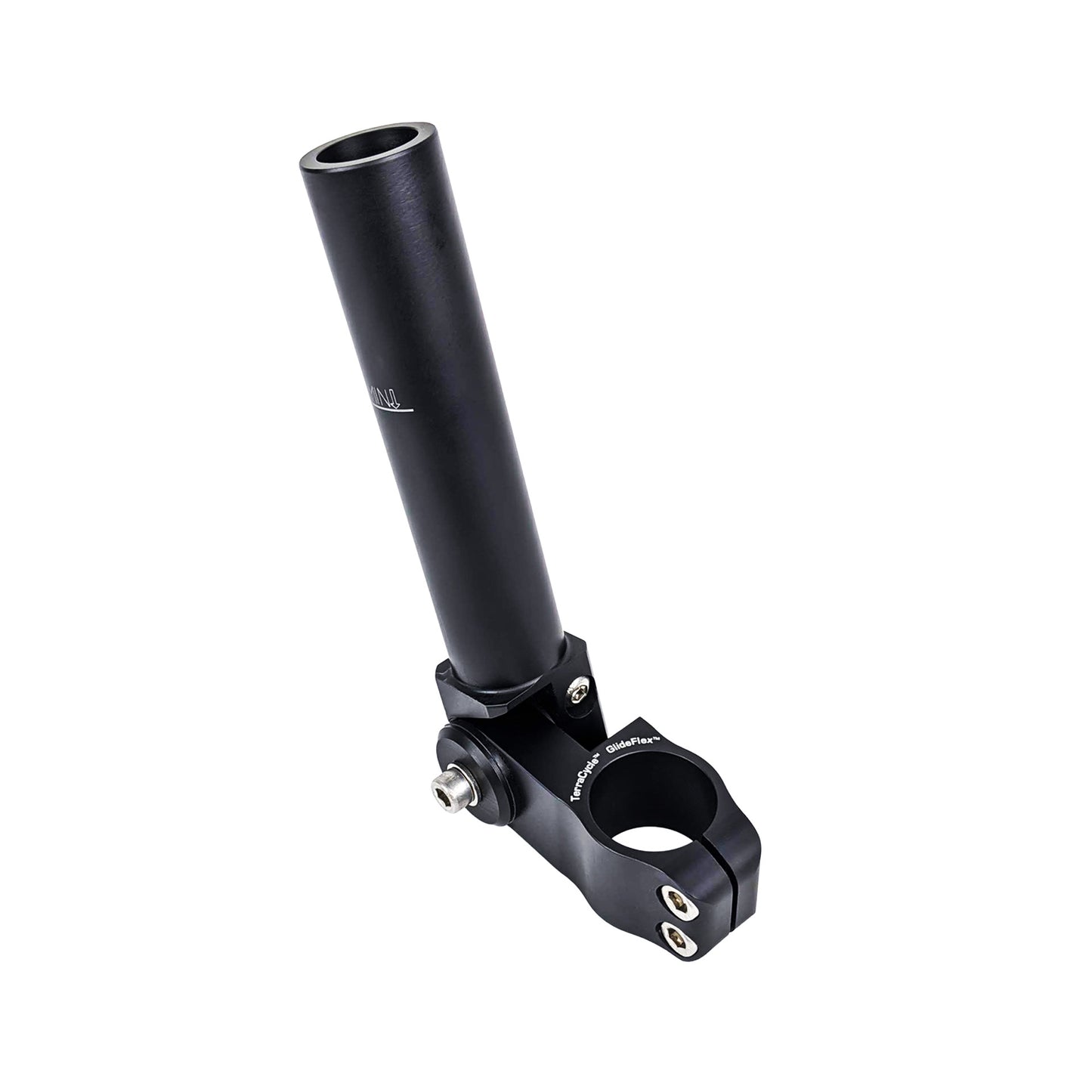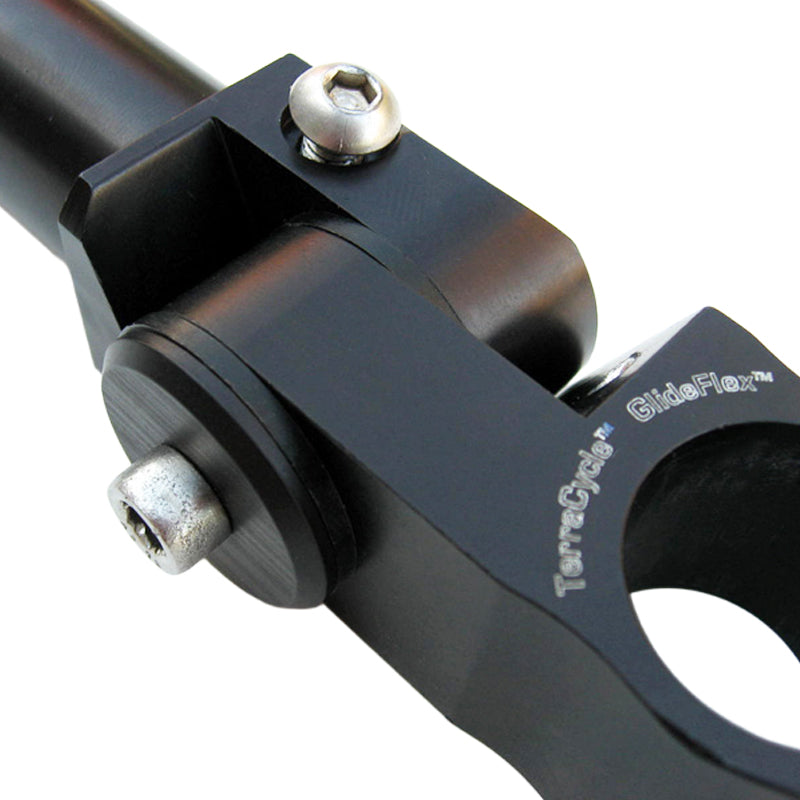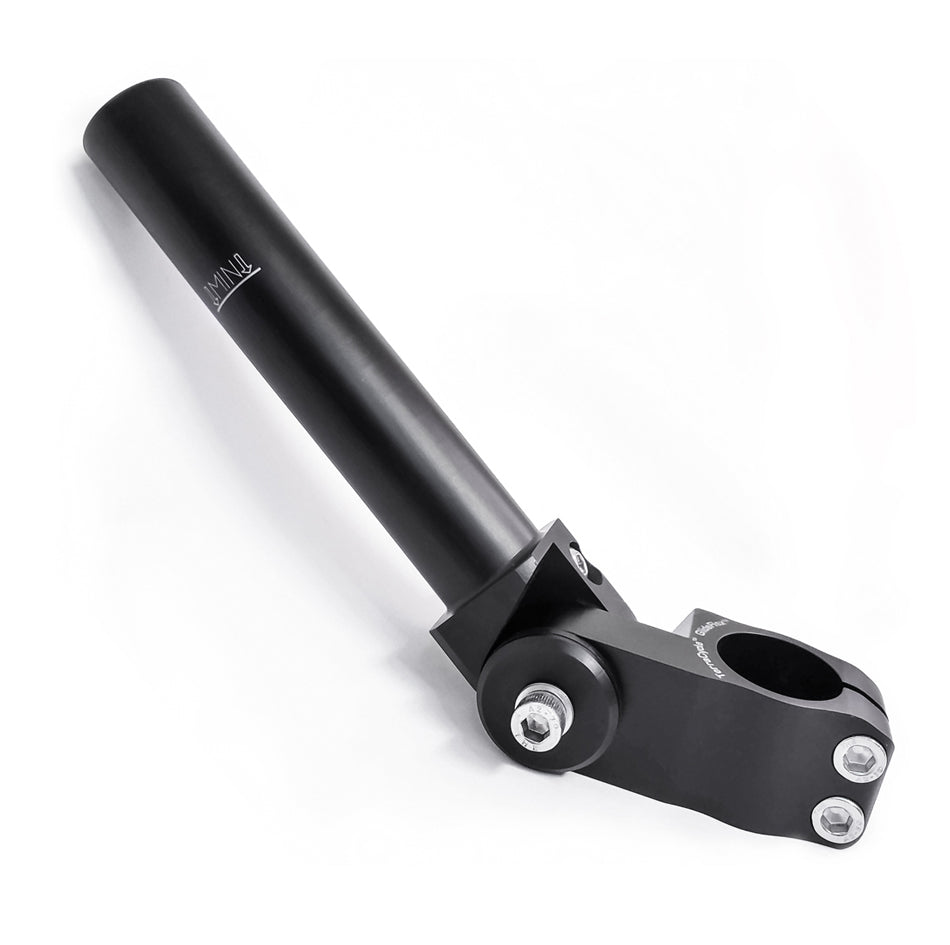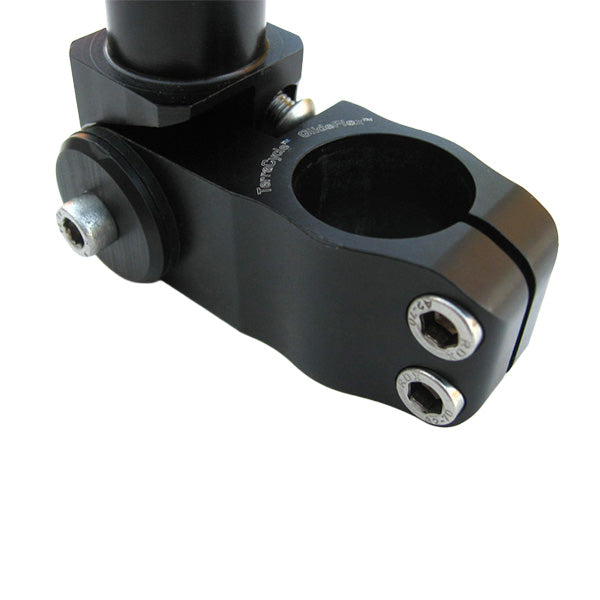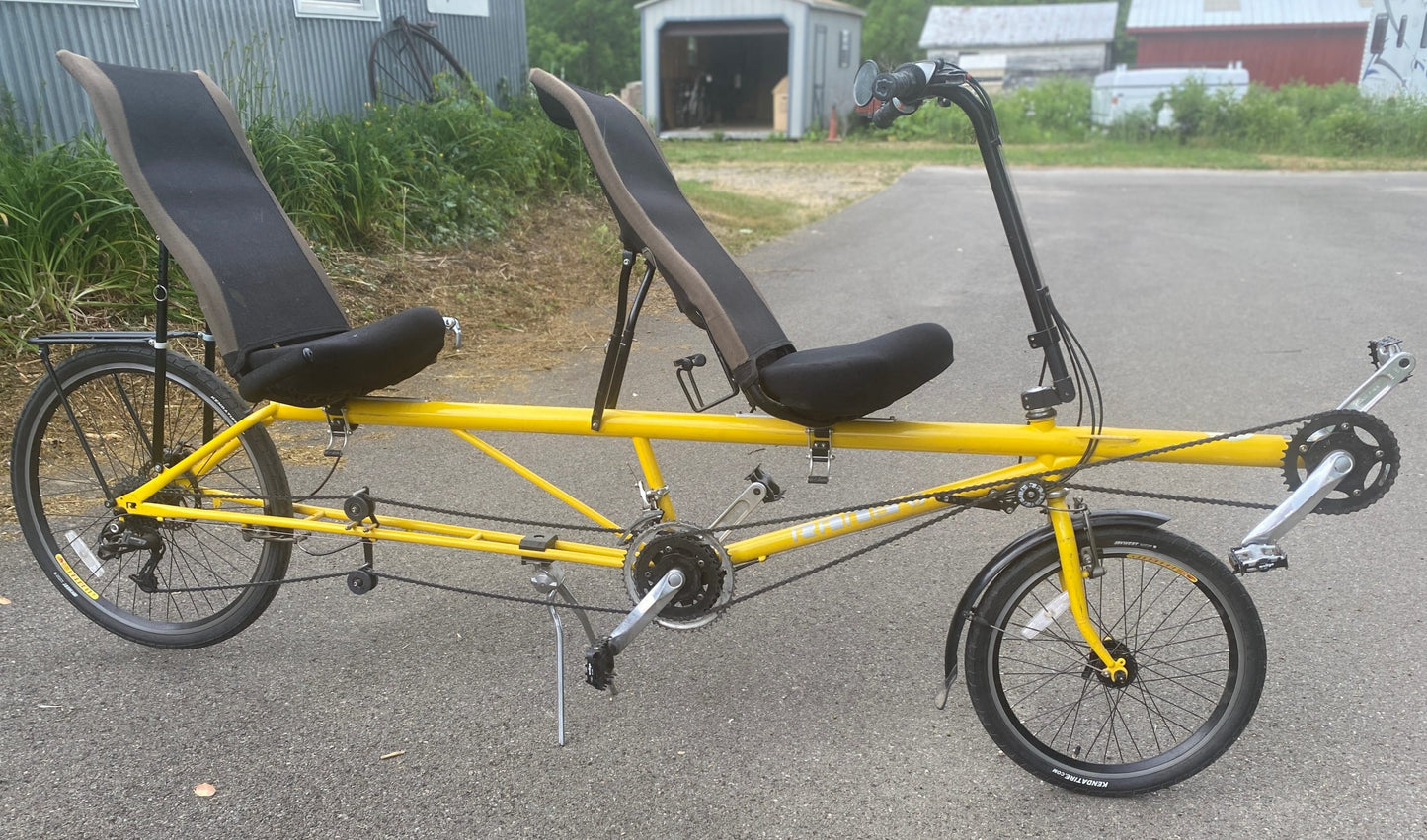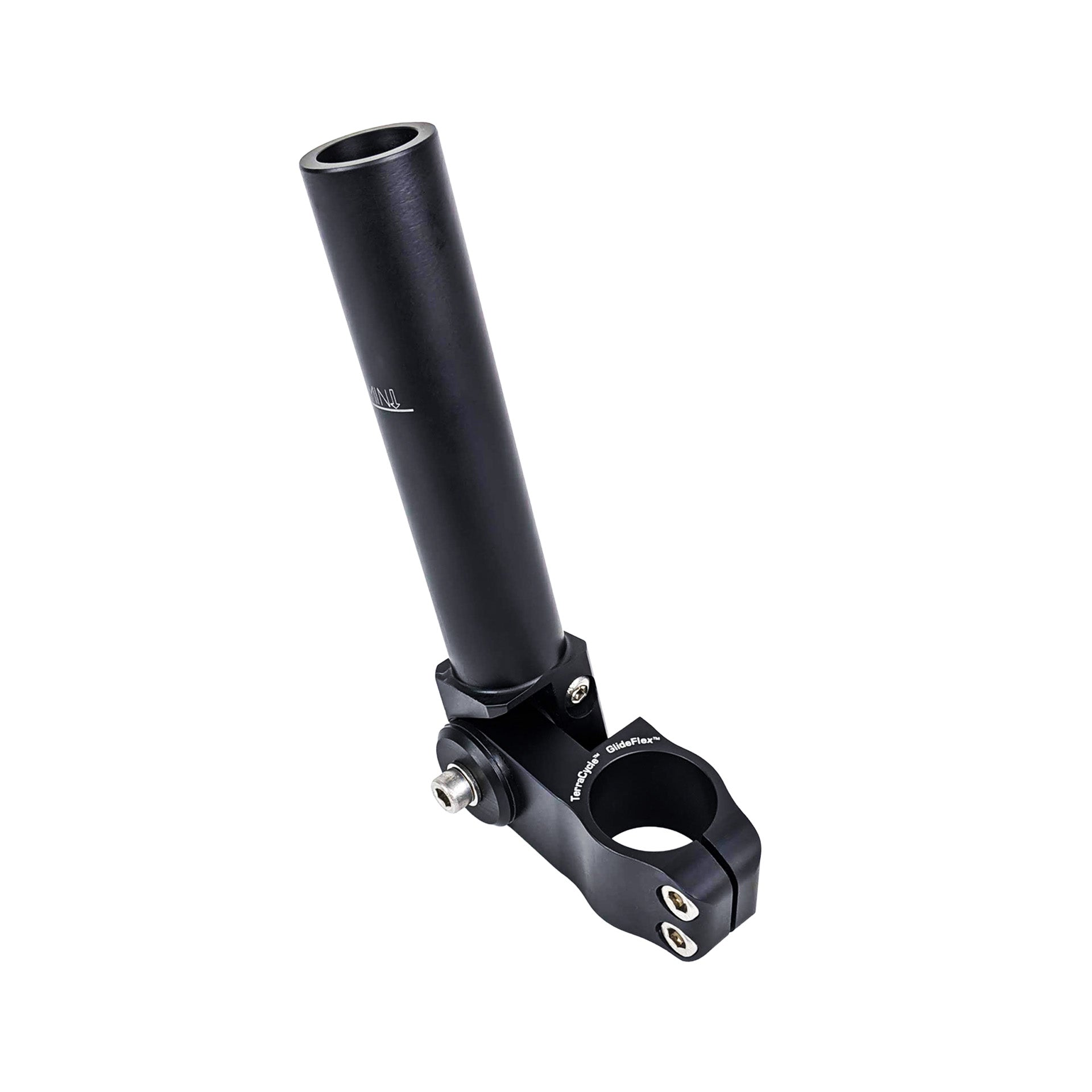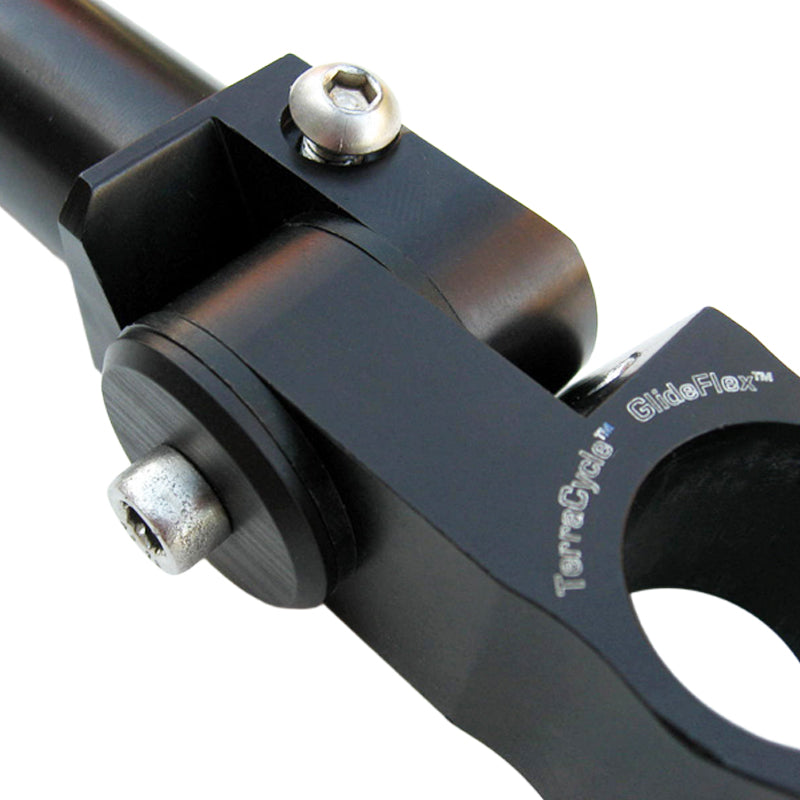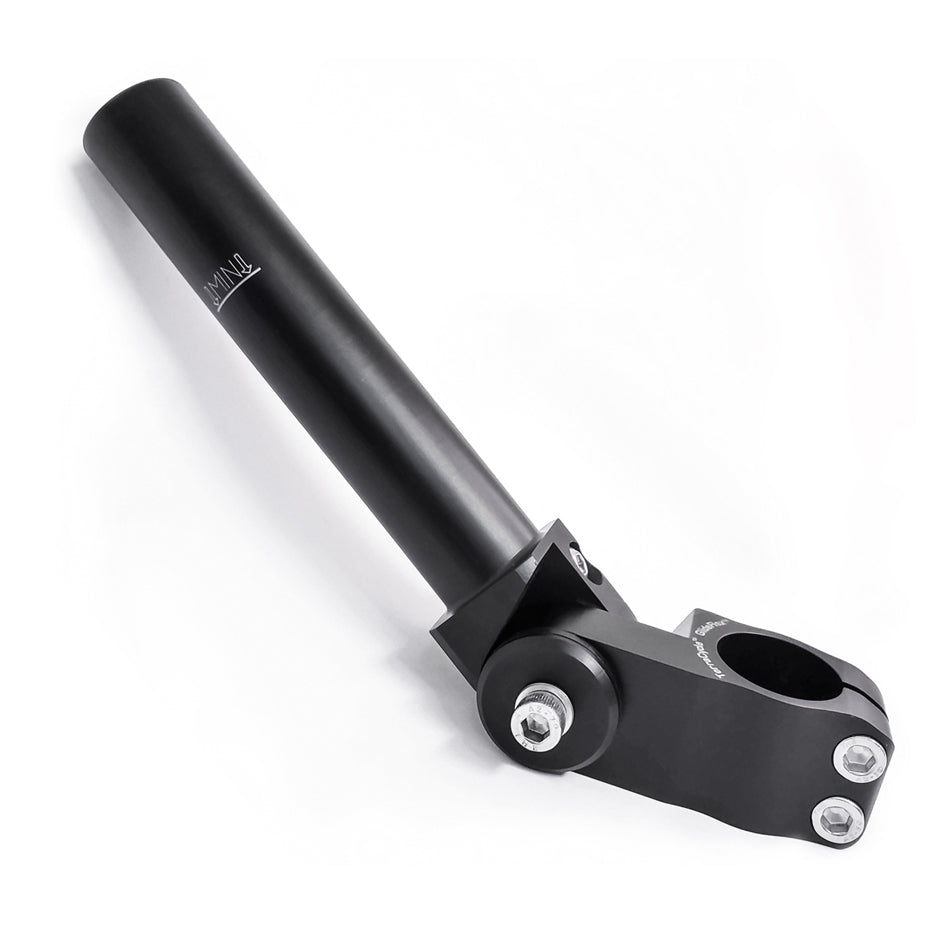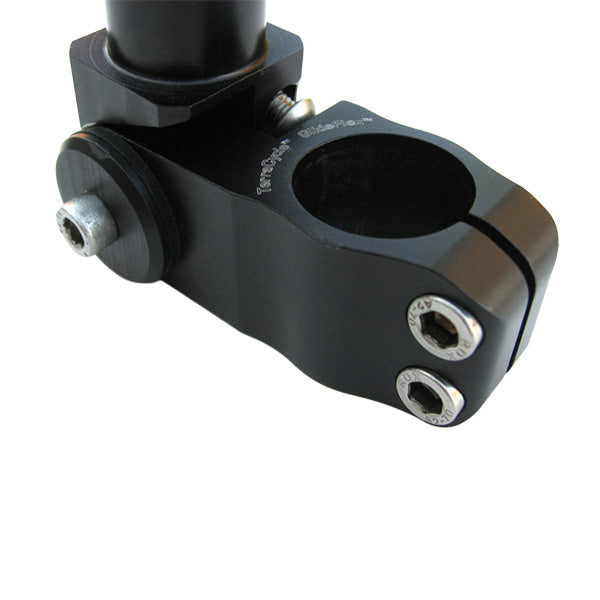GlideFlex Stem
GlideFlex Stem
SKU:GMH098.1
Couldn't load pickup availability
The T-Cycle GlideFlex takes Above Seat Steering stem performance and quality to a new level. Its elegant, smooth operation truly puts it in a class of its own. We talk to customers who purchase lesser stems and it becomes immediately clear how much better the GlideFlex is. If you compare the details that make it work, you can really tell the difference. Friction on the T-Cycle GlideFlex is silky smooth—no "break free, then get moving" sticky feeling, no lurching, no squeaking—just smooth, steady, predictable performance that keeps the friction where you set it, all season long, year after year.
FAQ
1. I've heard about the GlideFlex, that it's really nice, but I don't know why. What's everyone talking about?
Mostly, they are talking about how smooth and steady the pivoting action is. It remarkably smooth compared to any other stem. But, there are some other things, like how it well it works stays the same over time and doesn't get loose, or change at all, really. There are a lot of other little things that people don't notice as well.
2. How does it do that?
With a completely different hinge mechanism. All other stems have a yoke arrangement, with two arms on the outside that bend in and squeeze a central pivoting arm. The bolt that squeezes it is the pivot as well. There are lots of variations, but that's the basic arrangement. It's easy to make, but it has several drawbacks. The first and biggest one is that as the outside arms bend in, they distort, and only really squeeze out at the ends. This leads to several problems, both initially and down the road.. The GlideFlex mechanism is more like a disk brake. All the squeezing happens evenly- everything stays parallel. Nothing is bent in the process. The friction surfaces are large, and made of Delrin, a special type of plastic. Since the squeezing happens in a straight line, the friction disks are always evenly and consistently loaded. There is no metal to metal contact on either the pivot or the friction surfaces. This, combined with the smooth moving Delrin disks, makes the folding action silky smooth.
3. It's more expensive than other stems, too.
Yes, it is. It takes a fair bit of machining to make a GlideFlex. We make them in our own shop, too, where we hold some pretty high standards. A GlideFlex is a quality piece, designed for years and years of use. The price reflects what goes into it.
4. How do I know it will fit my bike?
We make both the upper and lower sections in both 1 inch (25.4mm) and 1-1/8 inch (28.6mm). The lower section clamps to the top of your threadless fork. Most fork steerer tubes are 1-1/8 inches nowadays, but there are a lot of bikes out there with 1" steerers as well. Most handlebar masts are 1 inch ID, but a few are 1-1/8 inch ID. If in doubt, give us a call or an email and we can help you figure out what you need.
5. Is that bolt in the middle the pivot?
No, the bolt in the middle only sets the stiffness. It looks like must be the pivot, but it's not. The pivot is actually a large diameter (5/8in, or 16mm) horizontal post machined into the top section. You could actually remove the bolt and the stem would pivot just fine. It's a little hard to explain, but a splined cap keys to the inside of the machined post. The bolt squeezes the arm on the lower part of the stem between the cap and the other side of the upper section. To make the disk brake analogy, the cap and upper section are like a caliper, and the lower section is like the disk. The bolt is just how the brakes get applied.
6. Can I use one on my lowracer?
Probably not. The GlideFlex is designed to pivot back 25 degrees behind the steerer tube. Most lowracers need something like 70 or 80 degrees. We are working on as stem like this, but it isn't available yet.
7. Can I adjust my handlebars forward and back?
Yes. There is an adjustable backstop to control how far back the handlebars go. You can move them forward any time you'd like, as in getting on and off the bike, or making a low speed turn, or folding the bars down for transport.
8. Can I use a GlideFlex on my bike with a threaded headset?
Yes, with a Threaded to Threadless Adapter.
INSTALLATION INSTRUCTIONS
Installation is similar to other threadless stems:
- Install the GlideFlex on the fork, put on the preload cap, and adjust the bearing preload according to the headset instructions.
- Next, align the stem with the front wheel and tighten the steerer clamping bolts.
- To align the stem, fold it down, then turn the front wheel to the side.
- Sight down past the stem to the front wheel, and line them up.
- Tighten the bolts and pivot the stem back up.
- Slide the handlebar mast down over the top of the stem, adjust the height, and tighten it's clamp.
To adjust the stem's folding friction, turn the horizontal bolt holding the friction cap until you get the feel you like.
That's it! There is no maintenance required.
ADDITIONAL INFO
- When we designed the GlideFlex, we wanted to make a folding stem that worked the way we wanted it to- a smooth, steady feel, a wide friction range, and predictable, consistent performance that held steady and didn't fade. It took a lot of work, and a radically different design to do it, but we succeeded. The GlideFlex is known around the world as THE recumbent stem. The one to get when you want something that really works.
- Beyond the proprietary folding mechanism at the heart of the GlideFlex, there are a lot of little details that make it special and very satisfying to own. Everything is precision machined and finished, no shortcuts. We use only stainless steel fasteners. The steerer clamp mechanism maximizes the clamping area and minimizes the clamping stress for a secure fit on whatever type of fork you might have. The aluminum parts are black anodized and precision laser marked.
- The friction control on a GlideFlex is so consistent that most people set the feel once and never have to adjust it again. We have people tell us they have not adjusted the friction since they bought their stem 8, 10, 14 years ago. They just don't seem to wear out.
- The GlideFlex is a precision friction hinge with a wide range of friction settings. It does not have a "locking" setting. Most people with experience with other folding stems expect a locking feature is required to keep their handlebars from flopping around. What they find with the GlideFlex is that the friction is so consistent and so steady, they don't need or want locking.
- The upper and lower sections and the spline cap are machined from 6061-T6 aluminum and are black anodized. The friction/pivot bushings are Polyacetal ("Delrin"). All fasteners are 18-8 stainless steel.
- The steerer clamp on the lower section can be ordered in 1 inch and 1-1/8 inch (25.4 and 28.6mm) sizes. The riser on the upper section, that goes inside the steering mast, can be ordered in 1 inch and 1-1/8 inch sizes as well.
- The upper section can be pivoted back to up to 25 degrees behind the axis of the for steerer tube on which the stem is mounted. It can be folded forward to 120 degrees ahead of the steerer axis (to below horizontal).
- The height of the lower section is 1-1/8 inches, and requires 7/8 inch (22mm) to 1-1/16 inch (27mm) of steerer tube above the headset. The GlideFlex is designed for threadless forks, but can be used with threaded forks if you use a Threaded to Threadless Adapter .
- The riser on the upper section is 5 inches (127mm) long. This provides 3.2 inches (81mm) of mast height adjustment.
- Weight: 250g
- The GlideFlex is designed for above seat steered recumbent bikes with 1 inch or 1-1/8 inch (25.4 or 28.6mm) steerer tubes and 1 inch or 1-1/8 inch ID handlebar masts. The pivoting range is optimized for LWB, SWB, and Highracer configurations.
